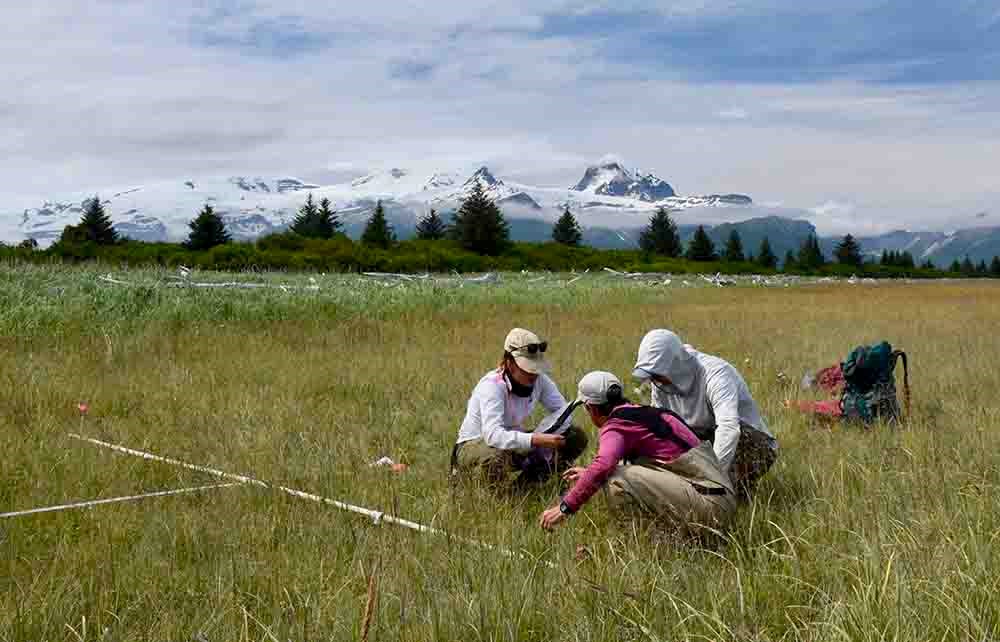Last updated: April 10, 2020
Article
Southwest Alaska Salt Marshes

Coastal marsh habitats in southwest Alaska comprise a small proportion of the area in Southwest Alaska Network (SWAN) parks, yet are heavily used by wildlife, migratory birds, and park visitors. They provide valuable ecosystem services, among them critical habitat for brown bears and migratory birds. These marshes are dynamic systems, sensitive to many influences, including warming temperatures, storms, tectonic uplift, development-related activities, and increased visitation. To understand how coastal marshes are changing through time, and to inform management of these valued and visited places, SWAN monitors vegetation composition in coastal marshes.

Findings
In general, plant communities have remained relatively similar between the 2007-2008 and 2018 sampling events, but we witnessed some localized and some broad-scale changes across the sites. The general habitat and vegetation types identified in 2007-2008 still capture a great deal of the variation in vegetation composition. However, we measured higher cover of vascular plants in 2018 than in 2007-2008 (Figure 1) and documented numerous examples of local vegetation change consistent with an increase in cover, including rapid colonization of beach dunes and mudflats (Figure 2), expansion of spruce cover, and shrub expansion at some marsh margins. With only two points in time, we cannot attribute changes to a long-term trend, but change recorded from field measurements between 2007-2008 and 2018 is largely consistent with change reported by Jørgenson and others (2010) in their comparison of images from the 1950s and early to mid-2000s. Such changes include continued succession of beach ridges, colonization of tidal flats following previously observed sedimentation, and increased cover of Sitka spruce.

Methods
SWAN collects vegetation cover data in permanent monitoring plots in coastal marshes at ten-year intervals. Approximately 40 monitoring plots were established in each of three sites in 2007-2008: Chinitna Bay and Silver Salmon Creek in Lake Clark National Park and Preserve and Hallo Bay in Katmai National Park and Preserve. In 2018, these plots were remeasured for the first time, and 43 additional plots were established in Kenai Fjords National Park, distributed among three sites: Beauty Bay, North Arm, and Long Beach.
Reference
Jørgensen, T., K., G. V. Frost, A. E. Miller, P. Spencer, M. Shephard, B. A. Mangipane, C. Moore, and C. Lindsay. 2010. Monitoring Coastal Salt Marshes in the Lake Clark and Katmai National Parklands of the Southwest Alaska Network. Natural Resource Technical Report. NPS/SWAN/NRTR—2010/338. Natural Resource Program Center. Fort Collins, Colorado.
